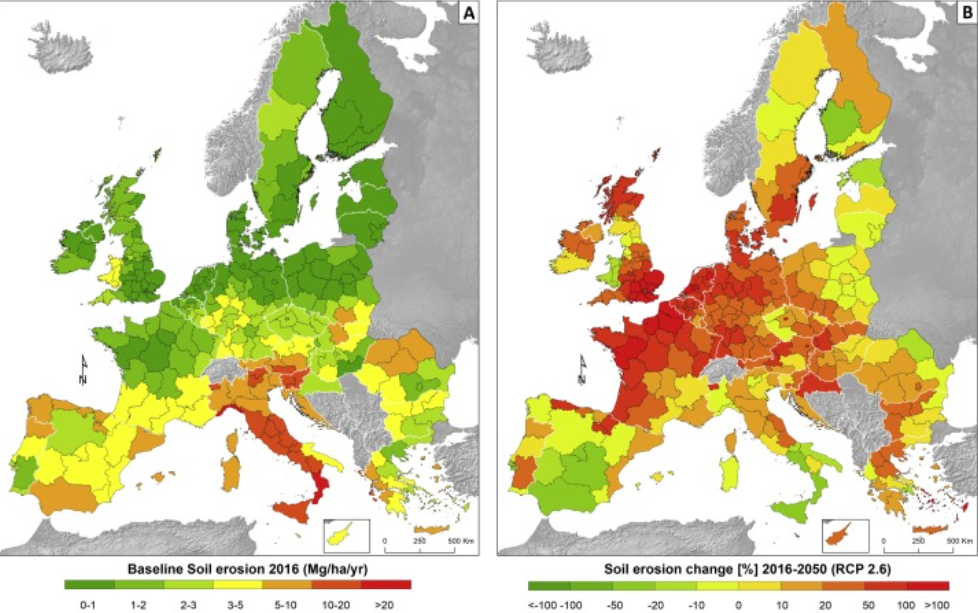Soil loss in EU and UK to soar 22.5% by 2050
Researchers are urging stronger soil conservation strategies.

Soil erosion in the EU and UK will rise by 13-22.5% by 2050 because of climate change, a study has warned.
Scientists from the European Commission Joint Research Centre Soil say soil erosion – when water or wind removes soil particles – will also accelerate because of land use changes and crop rotation.
Soil deterioration and low water quality due to erosion and surface runoff mean land can no longer be cultivated and must be abandoned.
The increasing temperatures and water shortages sparked by the climate crisis makes the soil dustier and the increased frequency of heavy rainstorms wash it away.
Soil acts as a carbon sink, sequestering CO2 from the atmosphere into the soil organic carbon, and soil erosion leads to the displacement of soil and the organic carbon within it.
The report, ‘Projections of soil loss by water erosion in Europe by 2050’, published in Environmental Science & Policy, states: “By 2050, mean soil loss rates due to water erosion may increase by 13–22.5 % in agricultural areas of the EU and the UK compared to the 2016 baseline.
“Those projections have been shaped using a combined model framework of both land use and climate change.
“Although climate change is a major driver of soil erosion change, some studies have also addressed land use changes and crop rotation as the most prominent factors that will increase future soil erosion.
“It is evident that policy makers would propose a stronger package of soil conservation practices (e.g., cover crops, reduced tillage, contouring, stone walls, grass margins) compared to the current baseline to mitigate the soil erosion increases by 2050.”
Britain has already lost 85 per cent of its fertile topsoil since 1850, according to research by the Sustainable Soils Alliance.
Join our commenting forum
Join thought-provoking conversations, follow other Independent readers and see their replies
Comments